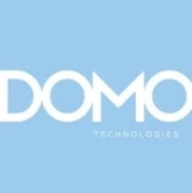

Domo and Yellowfin are analytics platforms competing in the business intelligence category. Domo seems to have the upper hand due to its broad integration capabilities and robust reporting tools, while Yellowfin's strengths lie in data storytelling and visualization.
Features: Domo provides real-time analytics, an extensive library of connectors, and robust reporting tools. Yellowfin offers comprehensive data storytelling features, intuitive visualizations, and engaging data narratives.
Ease of Deployment and Customer Service: Domo's cloud-based deployment allows rapid setup and scalability with responsive customer support. Yellowfin offers both cloud and on-premise deployment options, providing flexibility but can be more complex, backed by comprehensive onboarding resources.
Pricing and ROI: Domo's pricing is perceived as premium, representing a higher initial investment with potentially higher ROI through its integration options. Yellowfin is considered more cost-effective, with substantial ROI primarily from its visualization capabilities.

Domo is a cloud-based, mobile-first BI platform that helps companies drive more value from their data by helping organizations better integrate, interpret and use data to drive timely decision making and action across the business. The Domo platform enhances existing data warehouse and BI tools and allows users to build custom apps, automate data pipelines, and make data science accessible for anyone through automated insights that can be shared with internal or external stakeholders.
Find more information on The Business Cloud Here.
We monitor all BI (Business Intelligence) Tools reviews to prevent fraudulent reviews and keep review quality high. We do not post reviews by company employees or direct competitors. We validate each review for authenticity via cross-reference with LinkedIn, and personal follow-up with the reviewer when necessary.